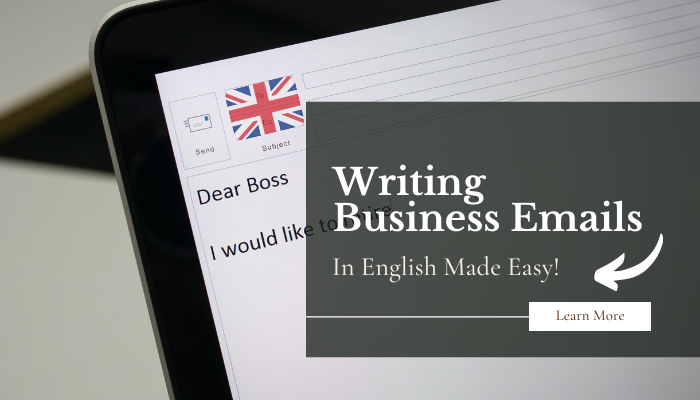


How many business emails do you write in a day?
A lot? If so, you’re not alone.
Email is incredibly important in the business world.
How can you make sure your own emails aren’t misunderstood?
Maybe even more importantly, how can you make sure your emails get read?
That’s right. I said, “Read.”
These days, just pressing “send” doesn’t mean your email is going to be read right away.
In order to be noticed, you need to know how to get people’s attention.
In order to use email to communicate well, you need to write good emails.
Luckily, writing a good email isn’t hard. It may even be much easier than you think.
Rules for Writing a Good Email
1. Be Clear
2. Make It Brief
How much does it cost to send two emails instead of one? Nothing.
So, why write about a bunch of topics in one email? Keep your emails brief by focusing on only one topic.
Explain your main reason for writing in the first paragraph. Be specific about what it is you want.
Kara Blackburn, a lecturer at MIT Sloan School of Management, said this about email writing: “Start by asking yourself what you want the person to do as a result of this email.”
Just asking that question will help focus your email.
3. Write a Strong Subject Line
Eighty.
That’s about how many emails business people receive a day, according to the Radicati Group.
Imagine your email sitting in a long list of other emails.
You don’t have to even imagine that. Just look at your own inbox.
What makes you want to open an email? Maybe the name of the person sending it. But if you’re like most people, you’ll open an email that has a strong subject line.
Your subject line is like a headline in a newspaper. The subject line needs to attract attention and make someone want to read your email.
You can write strong headlines by using the “4 U’s” approach taught by American Writers & Artists trainers.
The 4 U’s of writing headlines are:
Your email subject lines should definitely be useful and ultra-specific.
Apply the other two U’s only when it makes sense to do so.
For example, if you try to make every email you send seem urgent, then none of them will really seem urgent. Also, being too unique could make your email look like spam. Oops! We don’t want that to happen.
4. Be Polite
Would you use exclamation points and all caps in a formal letter? I don’t think so. But some people think that it’s okay to be overly emotional in emails. It’s not.
Calm down. To readers, too many exclamation points will seem like yelling. The same is true for words written in all caps.
Keep your emails polite and formal. Remember, your emails may not be only for the person you send them to. Someone may press “forward.”
5. Create the Right Tone
A good email is clear and brief, but not curt (rudely brief). Use sentence length, punctuation and polite language to create the right tone.
You also need to use the right language for each part of the email.
Business emails are like letters. They have a format. This includes:
The language you use in each part adds to the email’s clarity and tone.
Salutation:
The salutation you choose changes depending on who your audience is. It helps set your email’s tone. Would you use “Hey” in the salutation of a formal email? Definitely not. Instead, you would start with “Dear” and the name of the person you’re writing to.
For example:
Save “Hello,” “Hi” and “Hey” for when you want to create an informal tone.
What do you write when your email is going to a group of people? Some common salutations for groups are:
Opening Sentence:
Your opening sentence is the key to writing a clear email. A good opening sentence tells the reader what the email is about.
For example, if you’re writing to follow up on something, you could start with any of these:
What other words can you use to write a good opening sentence? Try these, followed with your reason for writing:
In business, people tend to write emails to:
One of the above will most likely be your reason for writing.
File Attachments:
If you’ve attached a file to your email, make sure you tell the person you’re writing to that you have attached it. The more specific you are, the better. Being specific adds to the clarity of the email. Here’s an example:
“I’m sending you this week’s schedule as an attachment.”
You can also start your sentence with:
Ending:
When ending an email, ask yourself what you want the reader to do.
If you want them to reply to you, you can write:
If you want them to contact you if they need more information, you can write:
If you don’t want them to do anything:
Closing:
Just like your salutation, your closing will depend on how well you know the reader. Common closings include:
You may have received emails with closings like these:
These closings help create a closer relationship when you already know your reader.






















